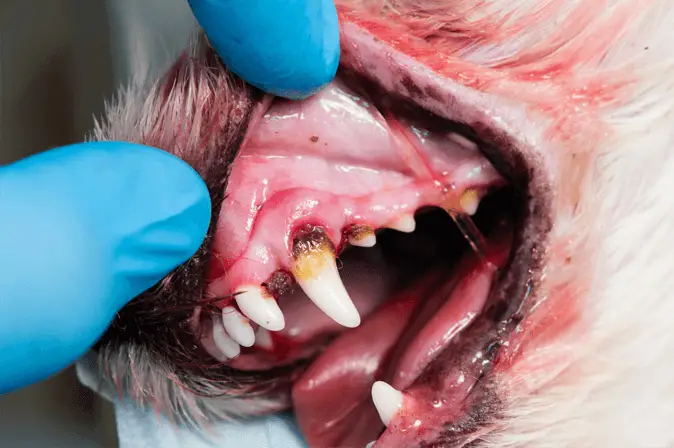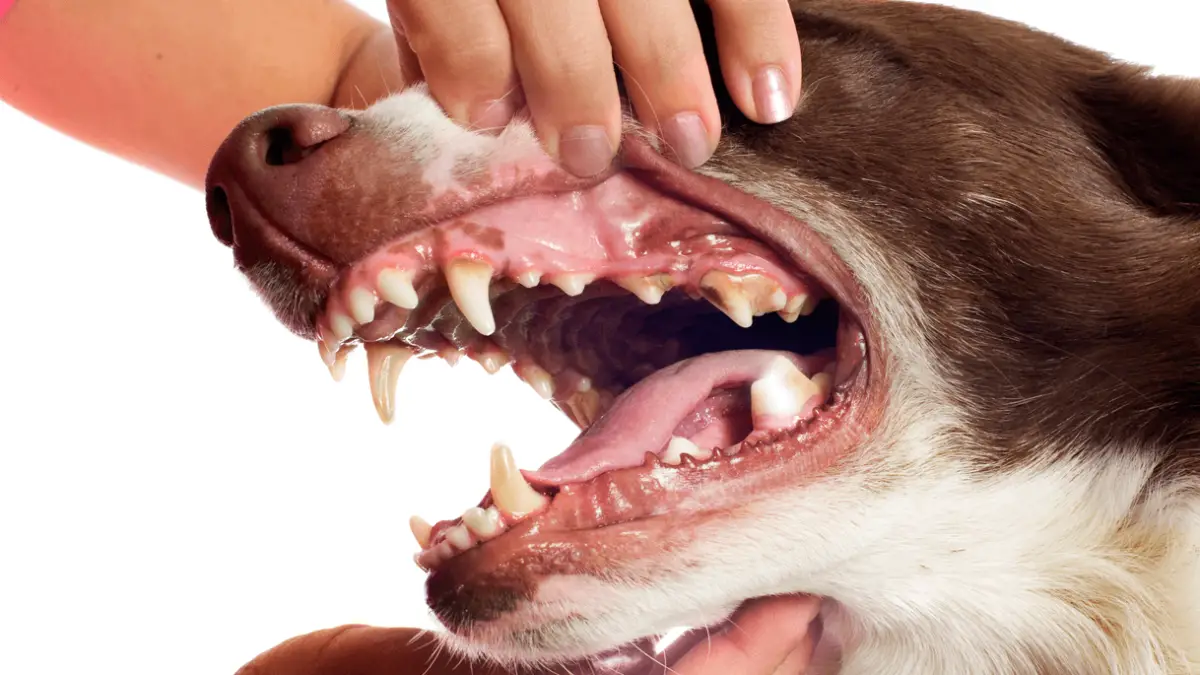How Dangerous is Tartar in Dogs
12.10.2021.
Dental hygiene is an essential part of a complete grooming. However, it is often forgotten, and dog owners don’t pay that much attention to their dog’s teeth. That is potentially dangerous because dogs can get a tartar buildup, which will affect their teeth. Tartar can cause different health issues, and if you are worried about your dog’s teeth, here are a few things you should know about it.
What is plaque?
Before we go into details about tartar, we first need to understand how it forms and where it comes from. We cannot do that without knowing what plaque is. The easiest way to describe plaque is - a soft, sticky film that builds up on teeth throughout the day. Humans and canines get it, but if we brush regularly, that plaque is removed.
Plaque is a mixture of bacteria, saliva, and other things that come to the dog’s mouth through eating. During the day, as the saliva comes in contact with plaque, the naturally present salts from saliva will mix and harden the plaque on the dog’s teeth. If that process is not stopped and the teeth cleaned, the plaque will fully harden and become tartar.
VET TIP: Dogs don’t develop plaque as fast as we do. Their diet consists of fewer carbs and sugars, so we have to brush our teeth more often than our dogs.
What is tartar?
After the dog’s teeth have accumulated plaque for a long time, the plaque will eventually fully harden and transform into tartar. It is a hard, mineralized substance on your dog’s teeth. It is also called calculus, and you can notice it by its color (yellow to brown shades). If left untreated, tartar in dogs can lead to periodontal disease that can become very painful and lead to different infections. In worst cases, dogs have died.

How does tartar affect dogs?
Dogs with a tartar buildup will have terrible breath. However, that is not the worst thing tartar will do. There are two major ways poor dental hygiene can harm our dogs. The first option will cause issues in the dog’s mouth, and the second option can cause problems all over the dog’s body. Here are the most common ways tartar in dogs becomes harmful;
First option
In the first option, the tartar buildup on the dog’s teeth will create an ideal place for bacteria to multiply. Since tartar can form under the gum line, the bacteria can cause painful inflammation of the gum. That inflammation is called gingivitis. It will cause painful bleeding in dogs. If it is still left untreated, it will progress to more serious periodontal disease. If that happens, the dog’s gums will bleed, even more, the dog will be in pain, and they might eventually lose the tooth. Plus, the tartar will push the gums to recede, exposing the enamel-free part of the tooth. That part is extremely sensitive and can become very painful.
Second option
In the second option, tartar in dogs will cause the absorption of bacteria in the dog’s bloodstream. You can probably imagine, this is not something that should be taken lightly. Bacteria absorbed through the dog’s mouth can be deposited in major organs in the dog’s body. That will lead to life-threatening infections and urgent vet care. Even if your dog survives something so dangerous, the treatment costs will be very high.
VET TIP: Brushing your dog’s teeth is very important! Make sure you get your dog used to it from the beginning.
Can tartar in dogs be prevented?
The good news is that plaque buildup and tartar in dogs are preventable. Even if your dog hates having their teeth brushed, there are ways you can prevent tartar. Make sure their teeth are clean and the plaque is removed. Here are a few ways you can do that;
- Regular brushing - This is the first thing we have to mention. There are special dog toothbrushes and toothpaste that will help keep your dog’s pearly whites sparkly clean.
- Veterinary Oral Health Council diet - This is a special diet that helps prevent plaque from forming. These diets will prevent it by mechanical or chemical means, which means tartar cannot be developed.
- Veterinary Oral Health Council water additives - There are different chemical additives you can add to your dog’s water bowl that will significantly reduce the total number of bacteria in your dog’s mouth. If there are no bacteria, the plaque will not form, and if there is no plaque, the tartar cannot exist.
- Dental cleaning - Regular dental cleaning is as necessary for dogs as it is for humans. You can take your dog on a thorough cleaning every 6 - 12 months. Vets can do that under general anesthesia, so your dog won’t feel a thing.
- Dental chews and toys - There are different dental chews and toys available that will clean your dog’s plaque as the dog plays with them. They have a special shape that allows them to clean the dog’s teeth.
In conclusion
Tartar can be very harmful to dogs. If you want to prevent your dog from developing periodontal disease and keep their healthy teeth, you need to make sure your dog has some form of dental cleaning. There are different things you can try to prevent tartar buildup, and if you notice it, make sure to tell your vet about it.
World Dog Finder team







Share